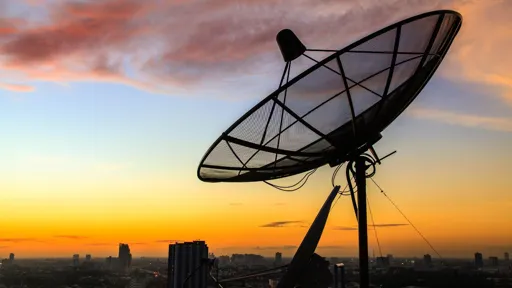Cilla Benkö: Radio must remain at the heart of the connected car
20 June 2025Audiences love radio in their cars. But the complexity of newer cars threatens radio's convenience. Car makers should be ready to give audiences free, frictionless, prominent radio - and broadcasters should be ready to support it.
Radio is resilient. For more than a century, it has been a trusted companion, connecting people with information and entertainment. Today, amid rapid technological change and growing geopolitical uncertainty, we should not underestimate the vital role radio plays in times of crisis.
Last month, I visited Chernihiv, a city in northern Ukraine that suffered unimaginable hardship in the early weeks of Russia’s full-scale invasion. With roads blocked, power grids destroyed, and phone signals severed, the people of Chernihiv were left isolated. Yet amid that darkness, one vital source of communication remained: radio. Battery- and solar-powered receivers carried life-saving information to families trapped in their homes. For many, the local public service broadcaster Suspilne became a literal lifeline, broadcasting updates, reassurance, and connection in the most difficult of times.
These stories aren’t unique to war zones. Earlier this year, mass power outages in France, Portugal and Spain brought daily life to a halt. Throughout these crises, radio remained as a vital source of information, with an estimated 62% of citizens turning to radio for their news during the blackout.
These moments remind us of terrestrial radio’s enduring strength: it can function independently of fragile digital infrastructure and often continues to reach people when other systems fail. That kind of reliability matters, especially in the car, where nearly a quarter of all radio listening takes place.*
In my own country, Sweden, 70% of people listen to the radio while driving. The voices, music, and shows they tune into offer more than entertainment; they provide safety, with live traffic updates and emergency alerts. That must not be lost as our vehicles become ever more connected, digitized, and automated.
The EBU's Connected Car Playbook laid the groundwork for how radio should thrive in the evolving in-car landscape. It brought together public and commercial broadcasters from across Europe to define a shared vision for radio in connected vehicles.
Now, that vision moves forward. As the Playbook era evolves, we enter a new, exciting chapter: Radio Ready – a refreshed commitment to delivering a simple, seamless, and compelling radio experience in the car, whether live or on-demand, regardless of how advanced dashboards become.
What makes Radio Ready groundbreaking is that, for the first time ever, the biggest European public and commercial broadcasters stand together with a shared ambition for radio in connected vehicles.
Three priorities guide our work:
- Prominence: A prominent, easy-to-find radio button is essential to ensure continued accessibility. Drivers shouldn’t have to navigate through layers of menus just to hear the morning news. The radio should be hybrid.
- Discoverability: Our content deserves to be found. Whether through broadcast or digital, the path from a listener’s dashboard to the broadcaster’s own app or stream should be seamless with easy links between radio and apps to provide convenience for the audience.
- Voice control: More drivers are using voice commands to access radio without taking their hands off the wheel. When a listener asks their in-car voice assistant to play a radio station, the car tuner should play it directly and not through a third-party app. Or if someone requests a podcast from Sveriges Radio, for example, it should open in the SR Play app. This way, car listeners get the richest version of the experience, with accurate metadata, personalized recommendations, and full access to public service media features and content.
Together, these principles support both the user experience and public safety. If switching to your broadcaster requires three steps or isn’t supported by voice command, the system has failed. And that failure has consequences.
Encouragingly, platform operators and content distributors are recognising these priorities, and their support is critical to achieving the scale and consistency we need. Looking ahead, we hope that all platforms in the in-car space will align with these principles.
Working closely with the automotive sector will be essential to define clear, practical guidelines for implementing these principles, with a shared commitment to keeping radio visible, accessible, and dependable in tomorrow’s dashboards. This work needs to drive real-world improvements, from better voice control to smarter app integration, ensuring radio remains a vital service, especially in moments when audiences need it most.
As we continue this work, let’s remember: the connected car is not just a new platform for content. It is a vital link in our emergency communication chain. Keeping radio strong, prominent, and resilient is not just a technical or commercial concern, it is a democratic and civic imperative.








